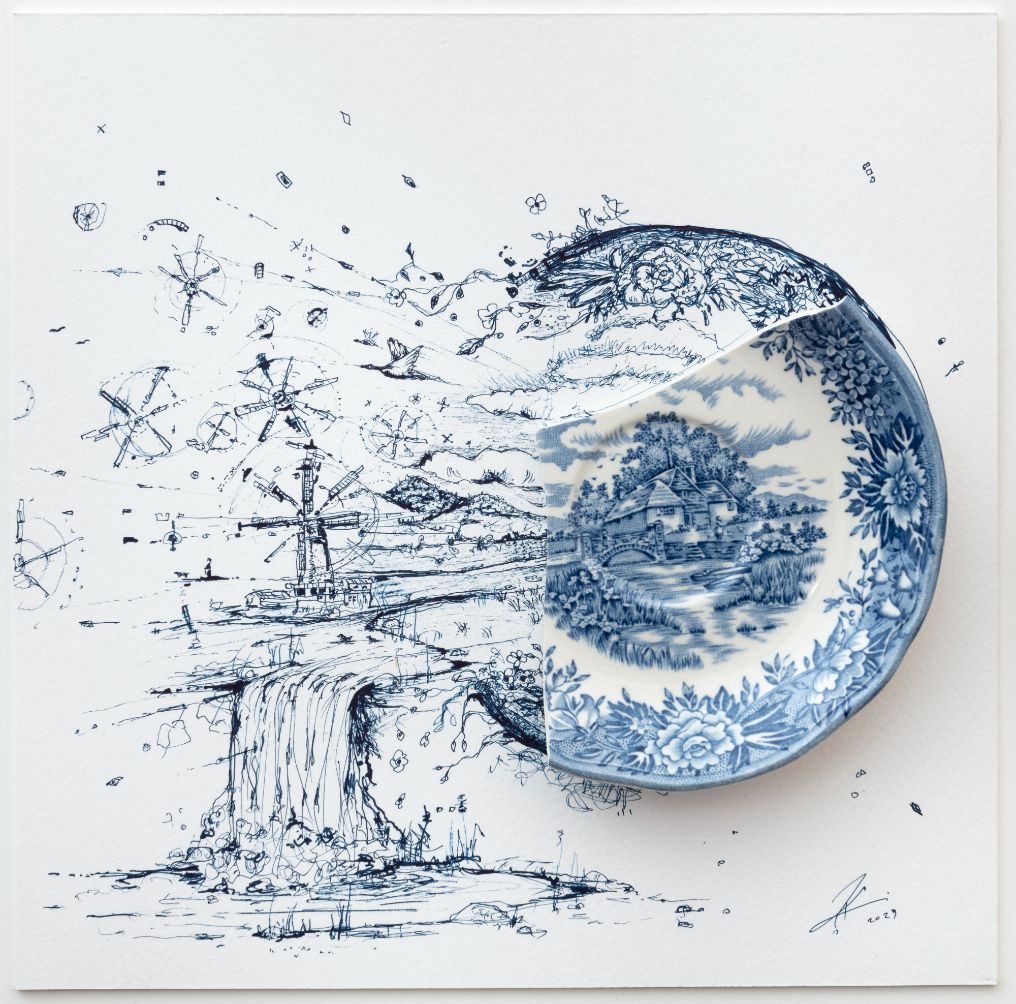
Robert Strati is an artist whose intellectual seriousness and conceptual openness define his profound and aesthetically striking work. Raised in an environment valuing artistic expression, his journey through studio art and art history in college led him to explore the intellectual dimensions of creativity. Balancing a career in technology with his passion for art, Strati’s recent “Fragmented” series explores the dynamic process of traditions breaking apart, embracing chaos, and birthing something new.
Rooted in personal experiences, this series reflects on the transformative power of accidents, revealing beauty in unexpected patterns. Strati encourages viewers to form their own conclusions, fostering curiosity and engagement. In an ever-changing art world, he sees his role as embracing change and empowering artists to chart their unique courses, emphasizing the creative potential inherent in transition.
From your very first series you’ve shown an intellectual seriousness but also a conceptual openness that makes your work both profound and aesthetically striking. Could you please tell our audience how you first discovered fine art and what your love is for creating?
Thank you. I’ve always created art; it’s something that was valued in my family by both my parents in different ways. My mom has always been interested in the craft of creating, she’s very skilled at things like drawing, painting, and collage and curious about new things. My dad admired the artistic spirit of independence, adventure, and being different. I carried these perspectives and values into school and have found them reinforced throughout my life. Growing up in my family and then carrying that into school, getting attention for the work I did reinforced itself throughout my life.
In my art, I’ve always been interested in the intellectual component. In college, I planned to major in studio art and art history but felt confined by the studio art classes. I ended up focusing on art history, which allowed me to appreciate all the intellectual, social, political, and cultural explorations of artists and art movements throughout history. However, I stayed engaged with both areas by making art at home and then bringing my work into the art school to get credit for various classes.
For the last 30 years, I’ve mixed a career in technology and research at startups and companies like Spotify with being an exhibiting artist I think my love for creating and art in particular is that art communicates in ways other forms of expression can’t. I love when I am able to connect with people in that very specific way and share the joy that comes from that.
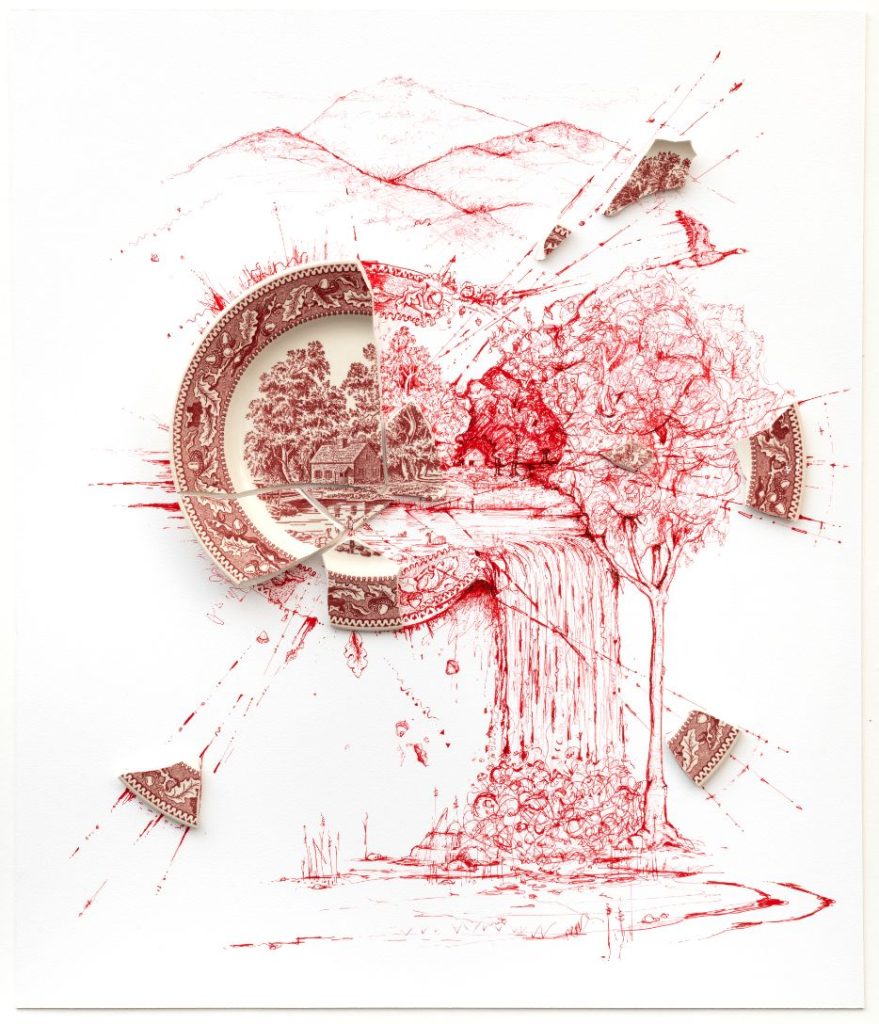
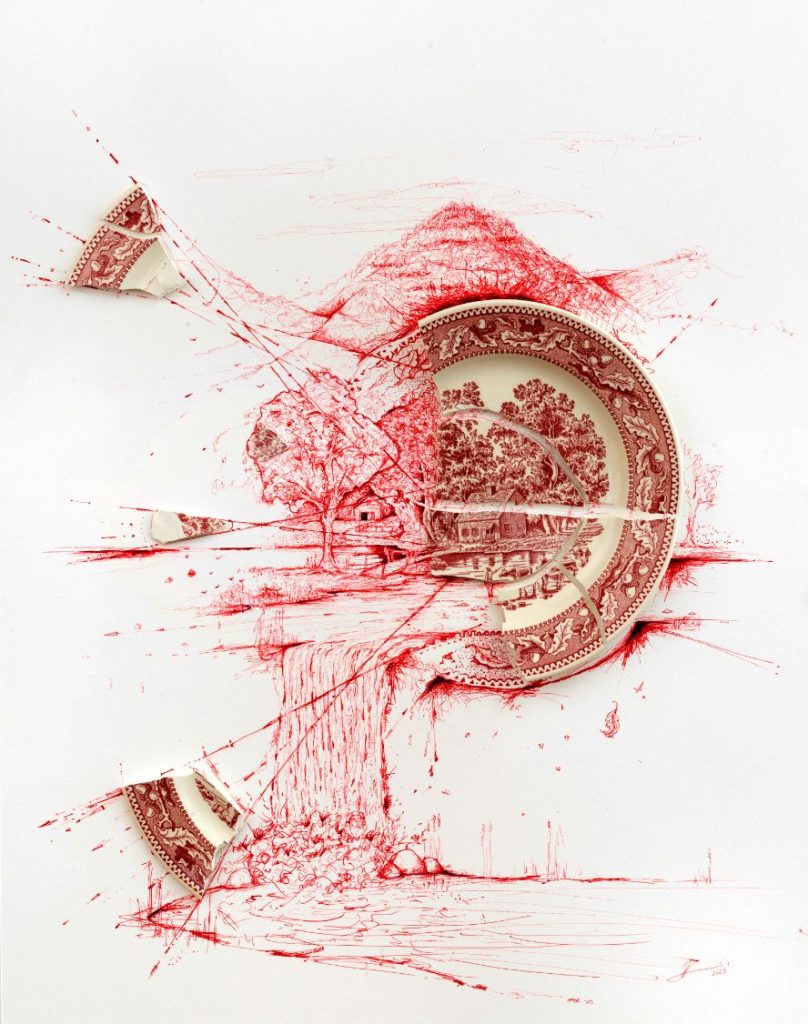
When originally coming into contact with your Fragment series I immediately presumed it was a visual conversation about art and time, this is to say, history and possibility. Departure exists in the shattering of confines but extension into newer realms and dimensions make a simultaneous freeing. In your Civilization series which came before, your prose poetry affirmed a deeper sensibility to what you conceptualize. Please do share what your newest series means to you intellectually.
Conceptually, the ‘Fragmented’ series embodies multiple layers for me. Life is always changing. We can see this in our personal journeys as well as societal and cultural shifts. We can see the fragmentation of cultural standards and societal structures pretty clearly at this point in time. I think the work for me speaks to that process of traditions breaking apart and what the process is from that point. That process involves a time of frustration, being upset, sadness, when something’s broken, whether that’s a plate or a culture. Once that’s accepted and the remnants are able to be understood, something new emerges. And at that point, there’s a freedom, if it’s embraced, to create something new which incorporates aspects of what once was, as well as the possibility of what could be.
The origin of the “Fragmented” series was actually the result of an accident when my wife dropped a plate that we inherited from her mom and it fragmented into a number of pieces during the pandemic. We didn’t want to throw the largest fragment away but didn’t know what to do with it so it just sat on our counter for a few months. When I eventually noticed the bird and the bridge motifs in the plate, it just sparked a vision of the world beyond the fragment itself. This all grounds the work in an expression of love for my wife and her mother, as the original piece was done as more of a gift than anything else. This also speaks to the reality of so many things coming from mistakes and the power of accidents, if they’re embraced from a positive perspective.
This can be difficult to navigate because there are negative emotions associated with an accident or a mistake. But throughout history, it’s been proven again and again that incredible things come from the result of accidents. I think that’s because accidents free us from having to come up with an idea for a painting or a new medicine or technology. Instead, we are faced with the unexpected. Sometimes, in rare moments, we recognize something new because the chaos creates new patterns of thought. That mix of chaos and the culmination of all the work up to that point can cause an unexpected recognition of what is truly needed because we are not focused on solving the problem, but on understanding and processing in a new way.
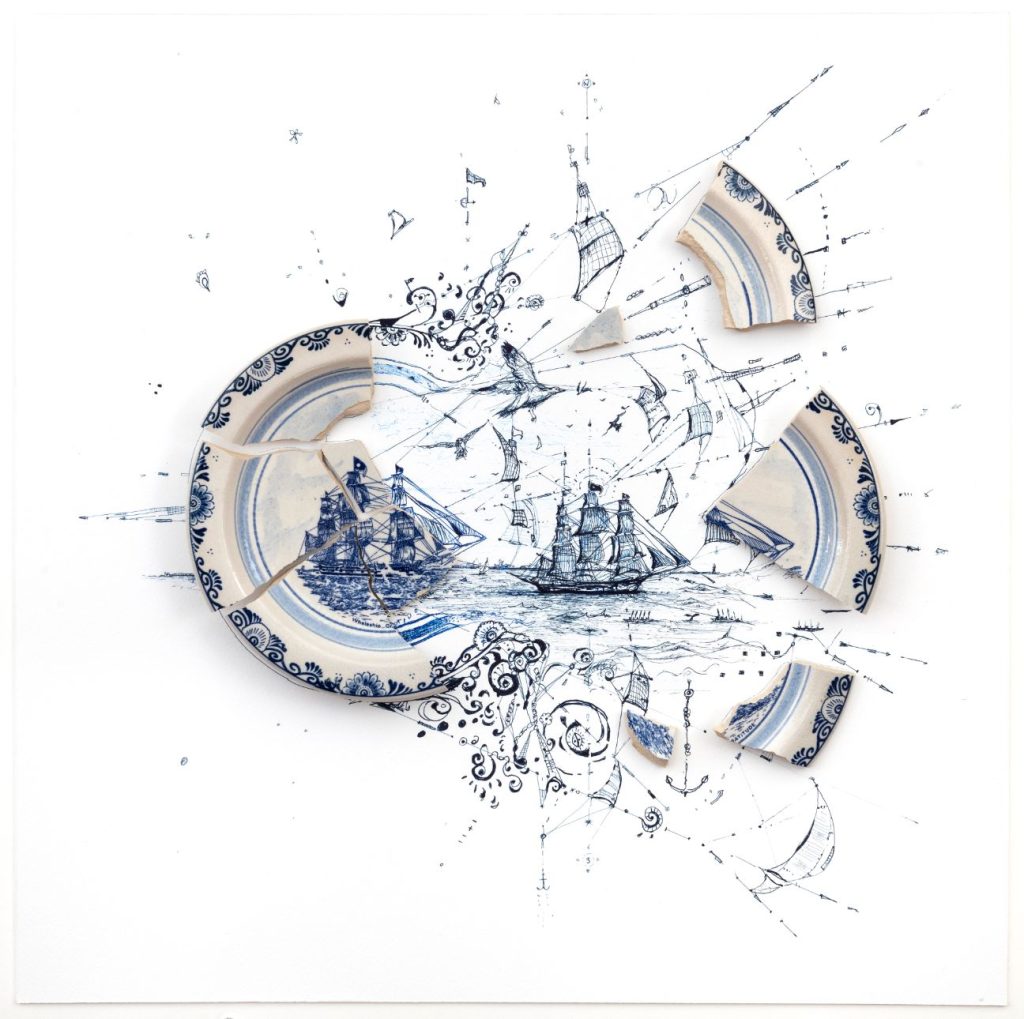
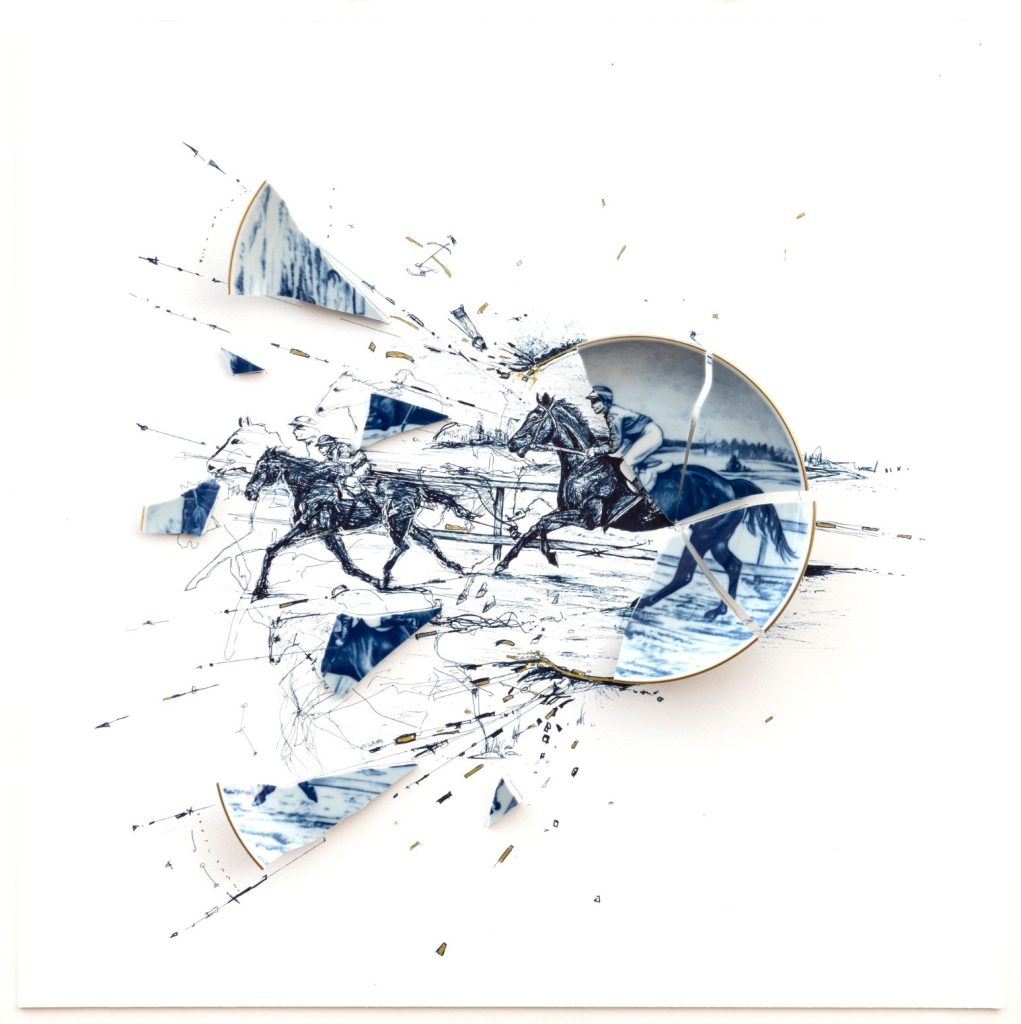
There is an explosiveness and energy behind your technique which raises questions about how you feel when creating, or about whats released through the process. Could you walk us through your mind and states of emotion when preparing, making a piece?
When making a piece, there’s always an element of chaos because I don’t know how the plate is going to break. I will break the plate and look at the resulting fragments and see if I can piece together the most interesting composition from which to start drawing. There’s a very controlled aspect to it after that, because I try to mimic certain elements of the plate, especially along the border to create the curvature of a plate. The flat surface along the border of the plate is called the mali and there are motifs and design elements that I want to capture, not perfectly, but relatively closely.
And I’ll continue that controlled process to a certain degree by pulling out motifs from the plate. Then I’ll usually take a break and come back with a fresh perspective a few hours or days later. I‘ll continue to add to the piece, but with a looser perspective, adding in new elements. Then there’s a point where it begins to feel too controlled and I’ll just kind of add in elements of chaotic drawing so there’s a mix of – as some viewers have mentioned – speed and stillness, chaos and control.
I think those concepts sum up the process of making the work. Emotionally, I often find myself thinking of difficulties and frustrations I have with situations in life, be that a challenging conversation or world events that are bothering me, or a kind of abstract merging of all of those. And as I’m trying to process those feelings they will sort of get embedded into the work. Ultimately, there is a sense of freedom by going back and forth between the confines of the plate and the confines of control and the confusion of chaos. The result is not only liberating, but often something that I find makes sense in a way that’s compelling or beautiful.
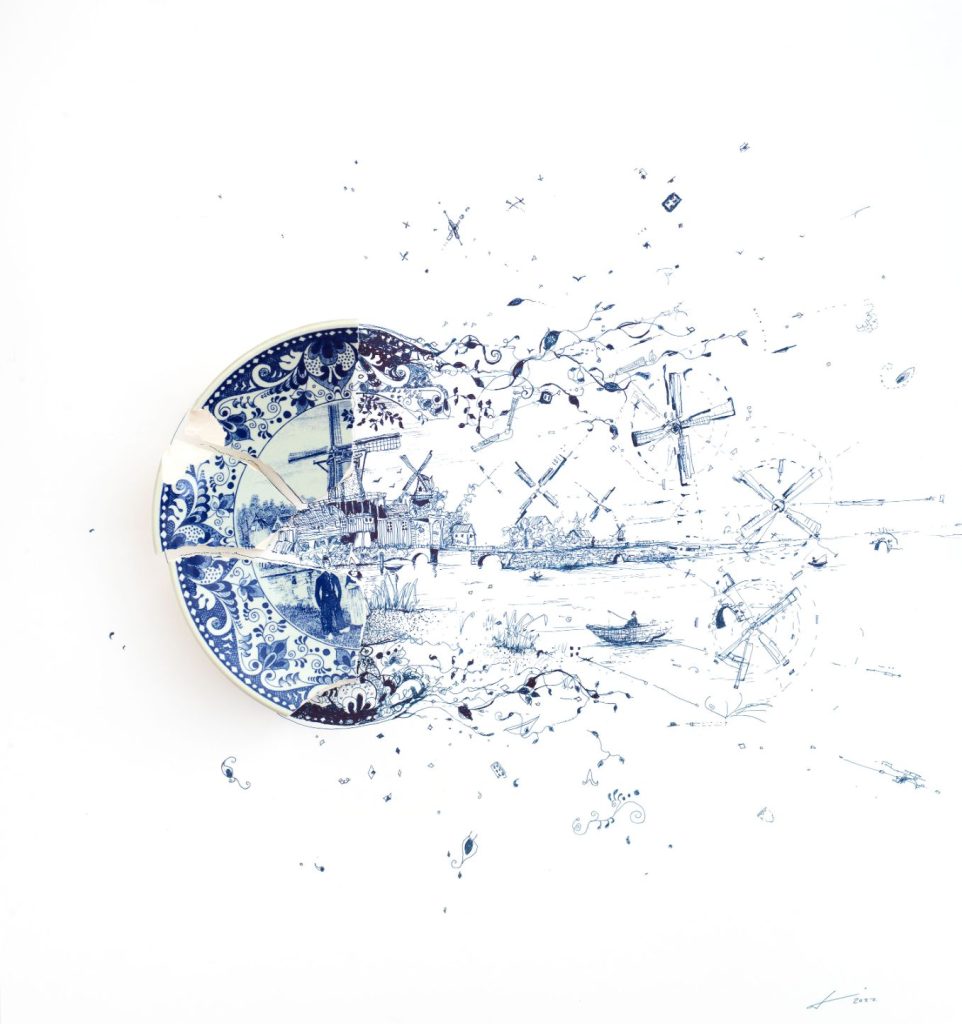
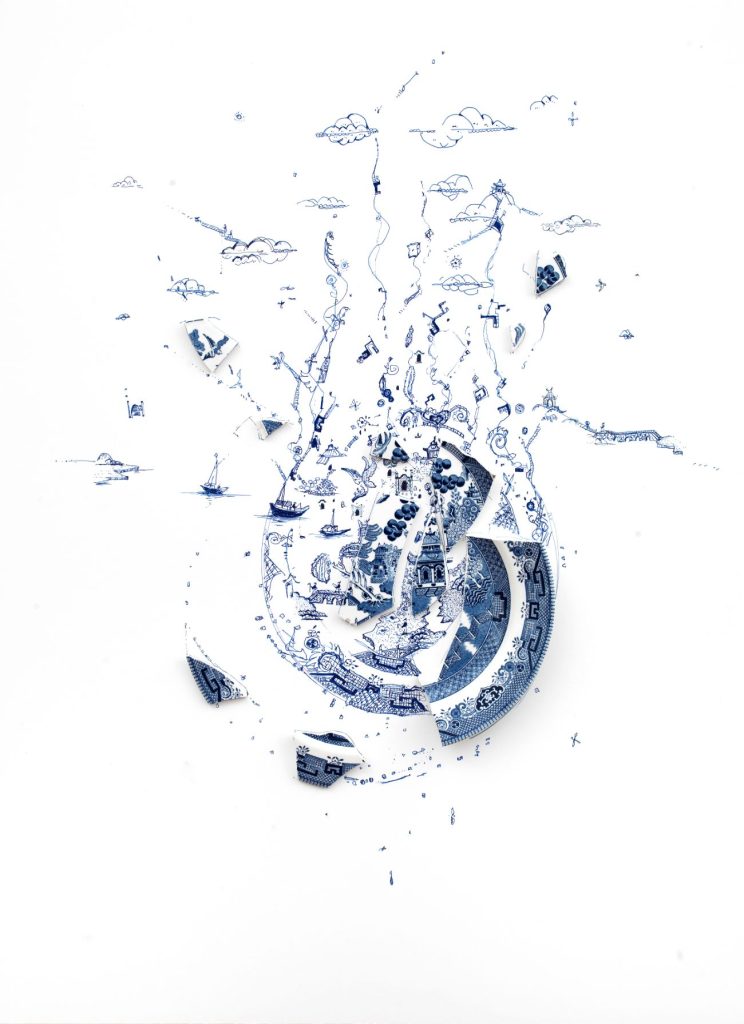
In your Civilizations series you approach creation as a merged entity of philosophical rumination and technological pattern making. May I ask what your relationship is to philosophy and art as an extension of personal meaning and discovery?
I think the relationship between philosophy and art and personal meaning and discovery is fascinating. When going through something like the “Fragmented” series or “Creating Civilizations,”I seem to create a process that allows for the subconscious and the conscious to interact through something like controlling chaos or allowing words to flow in a sort of automatic way. Both of these result in being somewhat hypnotized in the process of creating. The end result is a kind of reflection of the self that I’m not able to readily see. That’s why I’ll often want to keep the work around and learn from what I’ve expressed and what I’m trying to tell myself.
I didn’t go into either of those bodies of work with an intention as much as seeing something and following its path. I realized I needed to learn something that I couldn’t consciously conceive of – it is more an act of discovery. I think with the “Fragmented” series, part of it emerges from a sense that the world is breaking apart through the pandemic, through politics and war, celebrations, happiness, joy, birth, life events, death… and how to make something I could engage with on many levels. I’m still not sure if that’s the full story, but I’m always wondering about the things we don’t (and maybe can’t) know. For example, I have long had an interest in Near Death Experiences. So many people fear death as a darkness, an ending, but what if it actually sets us free?
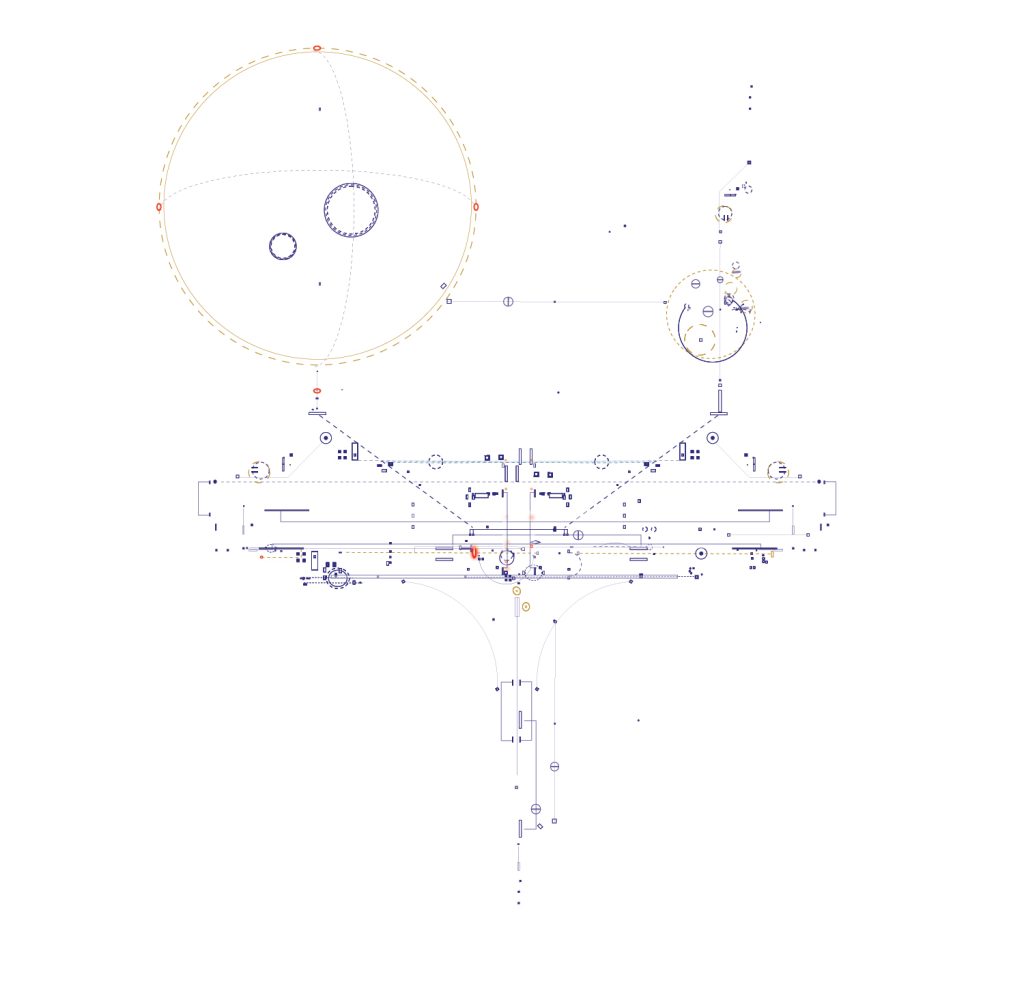
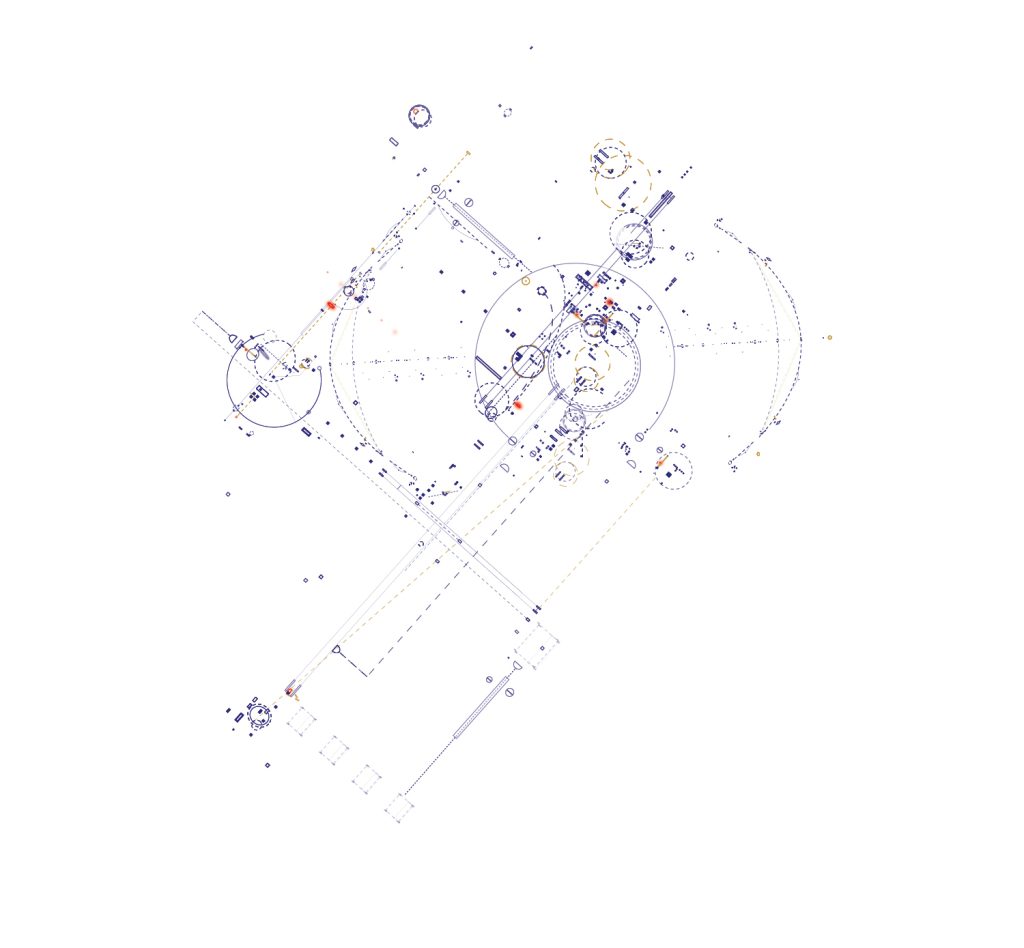
Many artists are defined by perceptions of viewers and publics’ which is expected seeing that the process of sharing is a communicative one. Preferentially, do you create in a way that allows people to reach their own conclusions or feelings about what you do, or do you have an underlying linked principle that persists across your works which you wish for them to discover?
The question of the viewer’s perception of the work is fascinating to me, especially with the “Fragmented” series. I was working as a director of qualitative research when this series got started, and would always be asking people what they thought or felt about certain things. This has been integral to the process.
I’ve learned a lot about the work and myself by listening to what other people see and perceive. I always ask—and I have recordings on my Instagram—”What do you see when you look at the work?” For me, what I witnessed quickly, and that I hope people continue to get out of it, is a sense of curiosity that engages them and brings them closer to the work, so that they can investigate it. I absolutely want the viewers to come to their own conclusions and experience my art in their own way.
Through different exhibitions, having seen people come in and look at the work, there’s this sense of confusion and interest from not having seen something like it before. They work through that, a sense of familiarity with the plates themselves, enjoyment, and interest, along with a sense of possibility, emerges. I love to see the variety of reactions that people surface – the connections to film, family history, music, science fiction etc – and I look forward to the conversations evolving as the work itself continues to evolve.
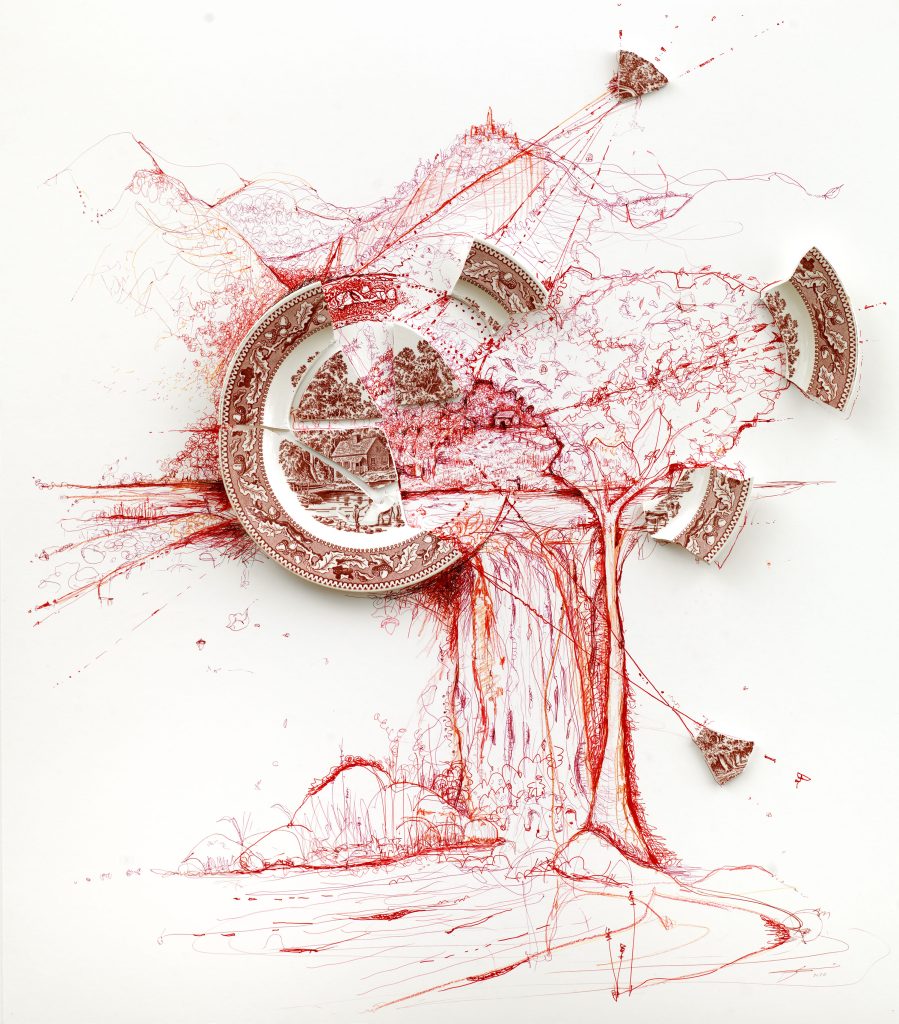
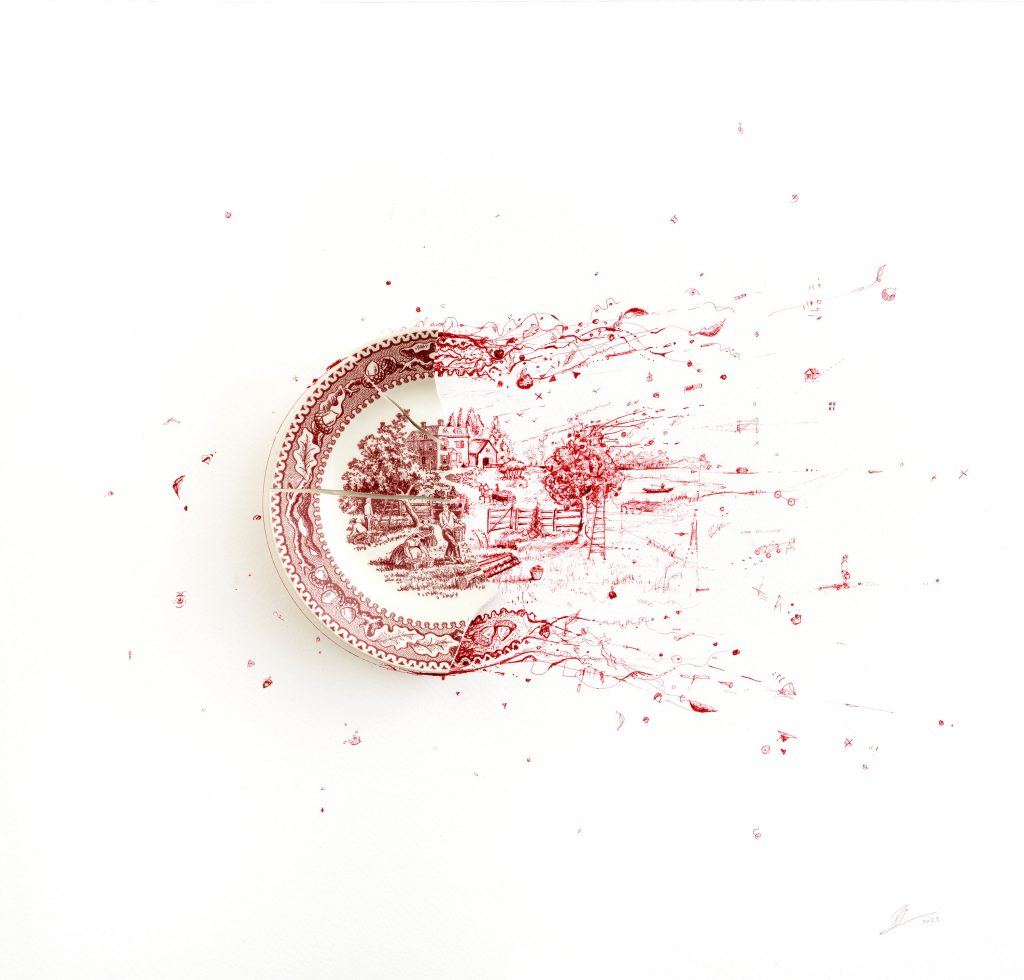
The art-world has changed in many ways in the last decade, and many social forces, technological, cultural, and sociological has made artists more than just producers of beauty, or creators of style. What do you feel is your role as a fine artist in our tumultuous age?
I think this ties into the overall concept of the “Fragmented” series, in that it is important to embrace change and see the opportunities inherent in transition. I have been experiencing new models of sharing the work with people and connecting directly with collectors and media in ways that were previously impossible. I believe artists can be empowered more now than ever to chart their own courses and encourage others to do the same. Right now, the creative, innovative power of artists to generate new and meaningful realities is most needed.
Is there anything else you would like to discuss that we haven’t yet broached, concerning coming shows or words of wisdom?
I am planning an exhibition in NY city in the first half of 2024. It will be a new model for artists exhibiting independently, but inclusively and collaboratively with other people within and outside of the art-world and I will be sharing more of that process on my instagram through mini-documentary reels.
Beyond that, I would say the thing I have learned from both “Creating Civilizations” and the “Fragmented” series is that I now believe it is more from experiences rather than ideas that generates the most creative work. It is through experiencing things, often unexpected events, and processing those experiences through a mix of feeling, connecting, acting, thinking, changing, and many other unknown mechanics that the most authentic work is brought to life. The most control we have in that process is to recognize the messages that arise.
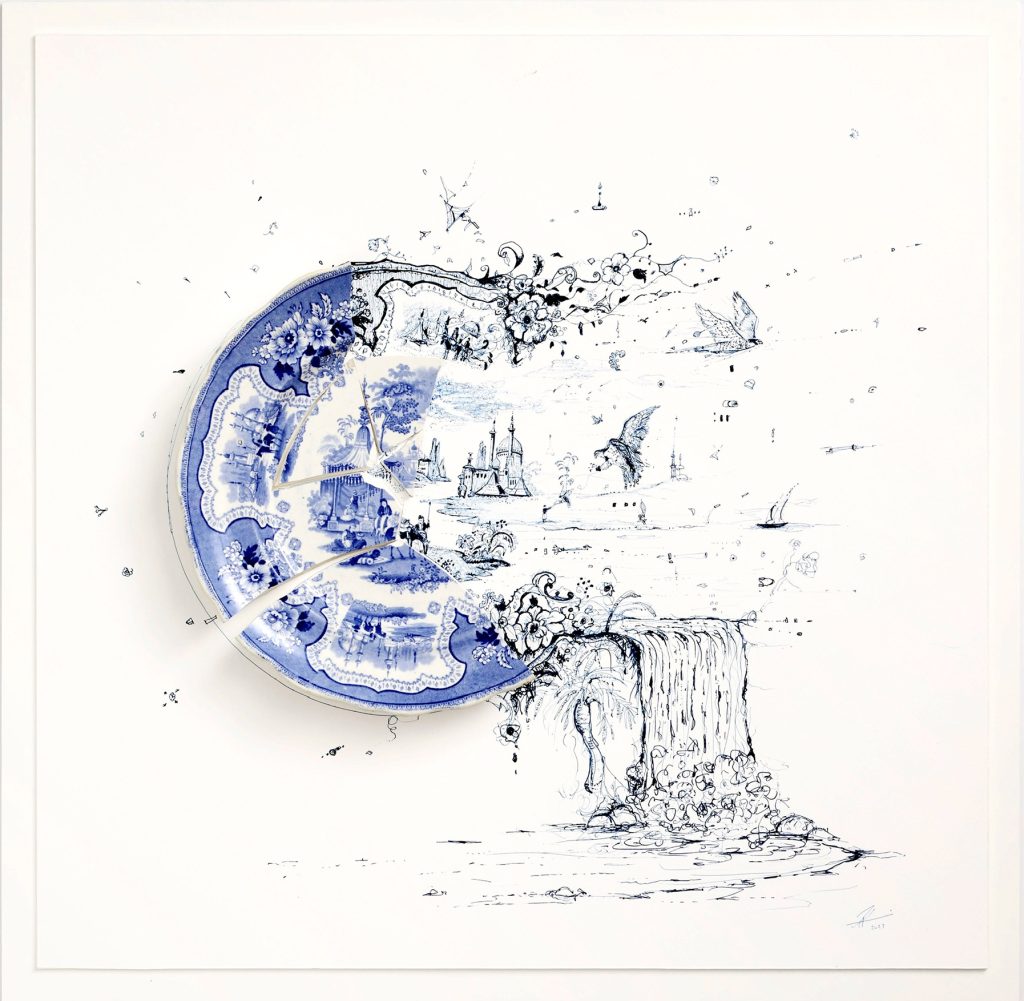
All images courtesy of artist Robert Strati

